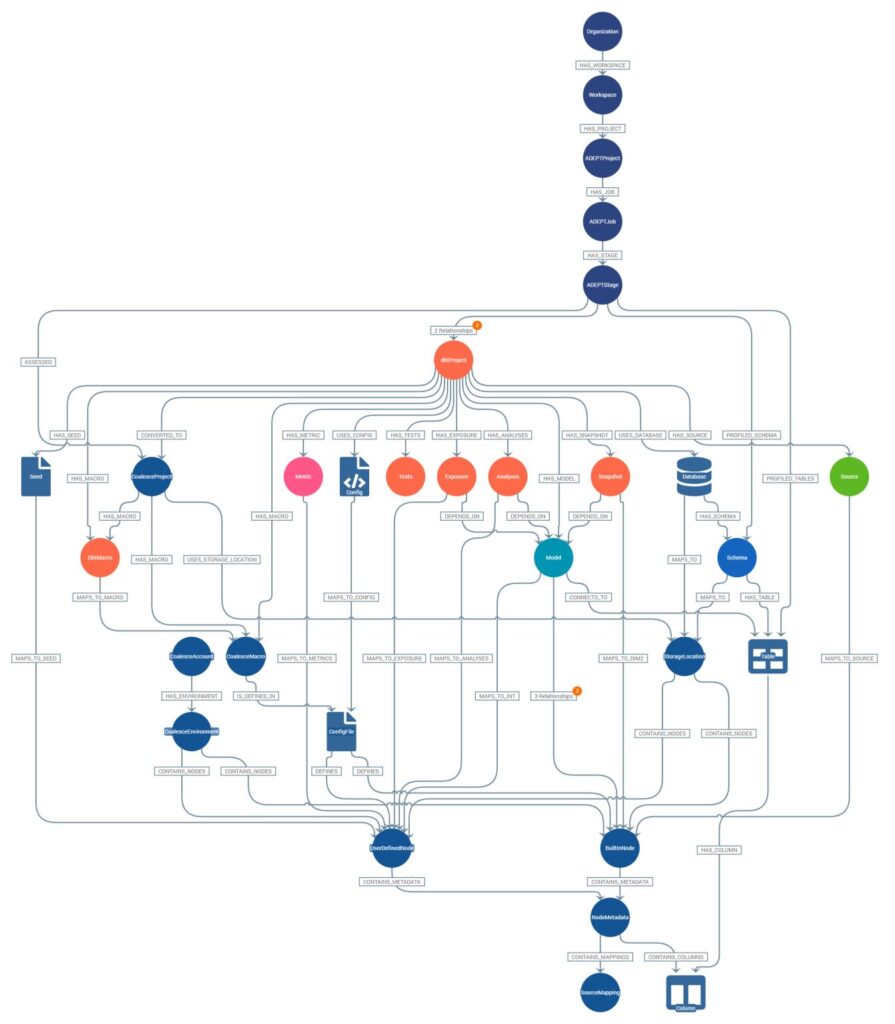Introduction
If you have observed a team of ice skaters, each one executes precise flips, leaps, and spins that work in perfect harmony. Now picture moving that team to a different ice rink, under different conditions, without missing a beat. A tricky proposition, isn’t it?
That’s exactly what data migration feels like — scooping up all that complex, interconnected data and transferring it elsewhere, ideally without creating a single ripple of disruption. A process far more intricate than it initially appears, data migration demands meticulous planning, a thorough understanding of both the source and destination systems, and an unwavering attention to detail.
Regardless of your feelings on figure skating, in the colossal arena of data management, understanding the subtleties of data migration will not only deepen your toolkit but also keep you ahead of curve. So, let’s tie up those laces and hit the ice.
Understanding the Complexity of Data Migration
- Grasp what data migration really entails
- Acknowledge the role of data migration in your business
- Familiarize with the assorted types of data migration
Definition of Data Migration
Data migration is, in the simplest of terms, the process of moving data. This could occur between various formats, storage systems, or software applications. Oftentimes, it’s a crucial operation that comes during a system upgrade, consolidation, or while employing new software in a company. At its core, data migration is more than a mere IT task. It involves intricate steps that need to be implemented with precision to avoid any procedural hiccups that could potentially disrupt the entire data system in a business.
A common misconception is thinking of data migration only as transferring bytes from one location to another. This perception could not be more misleading as the process engages more activities such as profiling, cleansing, validation, and lastly, the actual movement of data.
Importance of Data Migration in Business
In the ever-changing world of business, the need to either upgrade or adopt new systems is inevitable. With such continual advancements comes the indispensable role of data migration. Successful data migration can drastically improve overall business processes, ensuring a more efficient, reliable system that, in turn, boosts your business’s performance.
Data migration is like the foundation of a skyscraper. It must be reliable, dependable, and robust. If not, the entire structure (in our case, the business) risks crumbling down. It’s a quintessential part of mitigating significant risks during transitions, avoiding any potential losses, whether in time or financial resources.
Different Types of Data Migration
Just as there are many reasons for data migration, so too are there various types. Understanding these types is key to successful implementation to avoid commingling data or losing critical information.
One common type is storage migration, occurring when a business outgrows its current storage system or when an upgrade is due. In such cases, data must be moved from the old storage system to the new one.
Another type is database migration – a more complex type as it often involves migrating both data files and formats.
Last but not least is application migration which involves moving an application program from one environment to another, say from an on-premises enterprise server to a cloud provider’s environment.
It’s paramount to identify the type of data migration required for each situation and map out a comprehensive data migration plan accordingly. This ensures that all critical information is properly transferred, validation tests are carried out, and any data errors are corrected well in time.

Unveiling the Data Migration Strategies
- Mastering these strategies can streamline your data migration project
- Each stage is a stepping stone to a successful data migration
- Guard against loss, corruption, or breach of data
Planning and Preparation
The journey to effective data migration begins with well-thought-out planning and thorough preparation. This stage forms the foundational pillar in the process of data migration, where both the source and target systems are meticulously evaluated. Unearth potential bottlenecks early and map your data fields accurately. A detailed project plan with clear timelines, resources required, risk assessment, and migration specifications is essential at this step. Remember, successful data migration is a marathon, not a sprint. A systematic, process-driven approach is the key to ensuring a smooth transition and operation post-migration.
The Importance of a Migration Blueprint
A comprehensive migration blueprint not only guides the process but also helps in maintaining consistency. Failure to create one might lead to potential setbacks, increased costs, and major data issues.
Data Cleansing
Data cleansing forms the second line of strategy and is a crucial aspect of data migration. It involves scrutinizing existing databases to identify inaccurate, incomplete, or irrelevant data. Maintaining quality data is indispensable to drive valuable insights. A clean database increases the efficiency of operations, reduces errors, and betters decision-making. Regular audits and data verification can ensure data integrity and enhance data quality.
The Domino Effect of Bad Data
Bad data can lead to poor decision-making, customer dissatisfaction, and eventually disrupt business operations. A proactive approach towards identifying and rectifying these issues is fundamental to championing data migration.
Migration Setup and Execution
The stage of migration setup and execution is where the rubber meets the road. The pre-migration planning and data cleansing initiatives bear fruits at this stage. Rigorous process execution as per the migration blueprint reigns supreme here. Use reliable migration tools and technologies that align with your organization’s needs and demands. Thorough verification, constant monitoring, and troubleshooting during migration ensure a smooth transition.
Choosing the Right Tools
The choice of technology tools becomes pivotal in executing a seamless migration process. They should be easy to use, flexible, and high-performing to handle high data volumes.
Validation and Testing
The final piece of the data migration strategy puzzle is validation and testing. It helps ensure that the migrated data is accurate, functional, and secure in the new system. It typically involves back-end validation, error checking, and testing the migrated data within actual system processes. Maintaining robust validation protocols safeguards against potential data loss or corruption.
The Importance of Reconciliation
Reconciliation checks, such as comparing record counts between the source and target systems, can warrant an extra layer of data security. In the end, diligence in the validation and testing process assures that the goals of your data migration project are met efficiently.
Overcoming Data Migration Challenges
- Know the quality of your data for effective data migration
- Adequate planning and testing is the key to successful migration
- Depth of technical skills will matter in the process
- Keep a close eye on budget and time because they will influence the success of the process
Transitioning from the discussion about the intricacies of various data migration strategies, it’s important to begin identifying the common hurdles that may arise during the process.
Data Quality Issues
Firstly, let’s talk about data. More specifically, the quality of the data you’re migrating. We’ve all heard the saying, “Garbage in, garbage out”. This can’t be more true with data migration. Corrupt, incomplete, or inaccurate data transferred to your new system will result in ineffectual and potentially harmful outcomes, such as unreliable analysis and reporting. The first step to dodging this bullet is to perform a comprehensive data clean-up prior to the migration.
Inadequate Planning and Testing
Without a strategic plan sketched out, you’re basically walking in darkness. Adequate planning and testing are paramount for successful data migration. This should include clear objectives, timelines, roles and responsibilities, and a well-defined communication plan. Incorporating rigorous testing procedures throughout the migration process ensures that any issues are detected and remedied earlier, rather than later.
Lack of Technical Expertise
Mastery of a particular technical skill doesn’t necessarily equate to expertise in data migration. It’s a specialized realm that requires a unique set of competencies. Therefore, it’s often wise to engage professionals who possess extensive data migration experience. They can confront and navigate around pitfalls that might be unseen or underestimated by those who are less experienced.
Time and Budget Constraints
Finally, don’t overlook the ticking of the clock and the draining of your monetary resources. Data migration is often a lengthy process requiring substantial investment. Precise projections and careful tracking of time and budget will be instrumental in your success. It’s not unusual for businesses to underestimate these resulting in inflated costs and stretched timelines.
Overcoming these challenging hurdles is not an easy process, but with the right understanding and preparation, it is achievable.
Leveraging Data Migration Tools for Efficiency
- Databases house various types of data migration tools.
- These tools can enhance efficiency, save time, and reduce human error.
- There’s a multitude of top-performing data migration tools available.
Overview of Data Migration Tools
Data migration tools come to the rescue when dealing with large amounts of data to smooth the journey toward reorganization and consolidation. Their function ranges from transferring data between data repositories, storage types, or computer systems, to reshaping businesses by restructuring databases. Quite simply, these tools make data migration manageable. That’s a significant shift from the manual system checks that put a dent in your productivity.
Data migration tools are an arsenal that optimizes the migration process, reducing human interaction, which in turn minimizes potential errors and saves time. They also offer various beneficial features, such as fault tolerance, compatibility checks, and almost zero-downtime migrations.
The Role of Data Migration Tools
Data migration tools offer you efficiency at your fingertips. They ensure a smoother transition during the data migration process, offering compatibility checks, reducing potential errors, and minimizing downtime. That’s a significant leap towards improved productivity, considering the manual checks that claimed hours of your day.
Benefits of Using Data Migration Tools
If saving time and reducing human error wasn’t incentive enough, data migration tools pave the way for increased efficiency and accuracy during the migration process. By offering compatibility checks, they ensure a smooth transition process. Plus, their fault-tolerant design minimizes the impact of potential breakdowns.
Imagine a world where database restructuring doesn’t come with the inherent dread of migration errors, compatibility issues, and seemingly endless downtime. That’s the peace of mind data migration tools bring to the table. They offer you the ability to migrate large data volumes quickly and accurately, all while minimizing potential pitfalls along the way.
Impact of Migration Tools on Efficiency
Properly leveraged data migration tools can transform efficiency during the restructuring process. The automated checks these tools offer not only save you precious time but limit the chance of human error creeping into the equation. The result is a much more streamlined process, with clear benefits for your business performance.
Top Data Migration Tools in the Market
While there’s a multitude of data migration tools available, a few stand out for their top-tier performance and robust feature lists. These include AWS Data Migration Services, Oracle Data Migration Assistant, and Microsoft’s SQL Server Migration Assistant. Each of these offerings brings unique capabilities to the table, catering to various migration requisites.
Collectively, these tools offer a range of distinctive features tailored to unique business needs. From compatibility checks to almost zero downtime migrations, these tools are architected to make your migration process as smooth as possible. The key lies in identifying the tool that most aligns with your data migration requirements.
Key Players in Data Migration Tools
Regardless of the unique migration needs, there’s most likely a tool in the market to cater to them. With offerings like AWS Data Migration Services, Oracle Data Migration Assistant, and Microsoft’s SQL Server Migration Assistant, you have access to tools with diverse features and capabilities. Your task then boils down to pinpointing the tool that fits snugly into your data migration goals.
Adhering to Data Migration Best Practices
- Planning and preparation lay the groundwork
- Regular data cleansing sharpens accuracy
- Testing and validation confirm the reliability
- Continual monitoring secures your data journey
Thorough Planning and Preparation
A primed approach to data migration involves a conscientious planning stage, where strategies are laid out with clarity. Comprehending the magnitude of the task, defining the objectives, and staying informed about potential challenges are the keystones of effective planning. Take into account the quantity, relevance, and distribution of data, along with methodologies that will be used and contingency plans, all of which underline the importance of planning.
The preparation phase, the practical application of your planning, comes next. It instructs you on setting up your data migration environment. Select the right mix of human resources and tools, and ensure they sync with your objectives. Make sure they’re amply resourced, whether it be through training, technical support, or constructive work ethics.
Regular Data Cleansing
Data quality is a major hurdle during migration. A heap of inconsistent, outdated, or redundant data can well and truly derail the entire process. Enter the concept of data cleansing, a practice aimed at eradicating these setbacks, all while enhancing data accuracy and reliability in the future.
It involves identifying, correcting, or purging inaccurate records from the database. Implement this process periodically, and you will find it significantly reduces errors during actual migration. This leads to a more streamlined migration experience, resulting in improved data accuracy and better decision-making ability in the business.
Adequate Testing and Validation
Also essential is the need to put your data migration process through rigorous testing and validation checks. Being reactionary in this aspect will only add to your problems. Instead, a proactive approach, where testing and validation form a core part of your data migration plan, paves the way for consistent data standards.
Testing here should cover data compatibility, integrity, performance, and recovery scenarios. On the other hand, validation ensures that migrated data is correct and functional within the new system. It corroborates if the data extraction, transformation, and load procedures worked as expected.
Continuous Monitoring and Support
Viewing data migration as a one-off task isn’t beneficial. Data migration must be seen as a continuous process, requiring consistent monitoring and adept support. Gaps might materialize post-migration, requiring an efficient addressing mechanism.
Monitoring your data migration includes collecting and assessing relevant data about the execution of your migration plans. You gain key insights on performance, process efficiency, and potential areas of improvement. A reliable support system helps here – be it from the technical team behind the migration tool or in-house dedicated support staffing.
Mitigating Data Migration Risks
- Recognize potential pitfalls that may arise during the data migration process
- Learn effective strategies to anticipate and counter data migration risks
- Appreciate the vital importance and benefits of risk management in data migration
Understanding Potential Risks in Data Migration
Data migration can be likened to moving house. It’s not merely picking up your belongings and shifting them to a new location. It involves preparation, understanding the new home’s layout, and anticipating potential pitfalls. Mistakes can occur in many ways during data migration. From data corruption or loss to unbudgeted downtime or major business disruptions, the risks are ample. Understanding these pitfalls is the first step toward mitigating data migration risks.
Strategies to Mitigate Data Migration Risks
Having identified the potential risks, it becomes vital to devise robust strategies that can effectively counter them. It starts with comprehensive data cleansing, ensuring that only valuable and necessary data is migrated to eliminate unnecessary spending and potential format incompatibilities. Another key strategy is to establish a robust backup plan before executing the migration. This way, your business can quickly reverse or remediate any issues that arise during the process. Another vital strategy is incremental migration — migrating data in stages. It not only helps identify and solve problems before they become catastrophic, but also minimizes downtime.
Importance of Risk Management in Data Migration
Risk management in data migration isn’t just about firefighting issues as they crop up. It’s a proactive, intensive process that encompasses risk identification, risk assessment, strategy formulation, and implementation. A well-thought-out risk management plan during data migration enables businesses to safeguard their critical data, minimize downtime, and ensure continuity of operations. It’s like having a roadmap that steers clear of potholes, enabling a smoother, faster, and safer journey. After all, in today’s data-driven business landscape, effective risk management isn’t a luxury—it’s a necessity.
Piloting the Data Migration Journey
Data migration isn’t as straightforward as copying files from one system to another. It involves strategic planning, detailed project management, and intense testing. Missteps can lead to data loss, significant downtime, or inflated costs.
Recognize that data migration is a vital component of your business continuity, with a direct impact on productivity and profitability. It isn’t an isolated IT issue, rather an essential business investment.
Begin with a clear understanding of the scope. Invest in professional project management. Ensure rigorous testing is part of your plan. Always prepare and remediate for potential issues.
Do you feel that your current data migration strategies are effective, or do you see areas of potential optimization?
Remember, the migration journey may be complex, but when you pilot it well, you reach your destination—streamlined operation, improved efficiency, and better decision-making.
Navigate skillfully, and your data migration will power not only current operations but also future growth.




